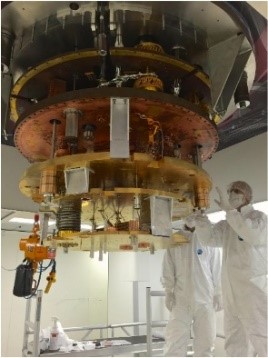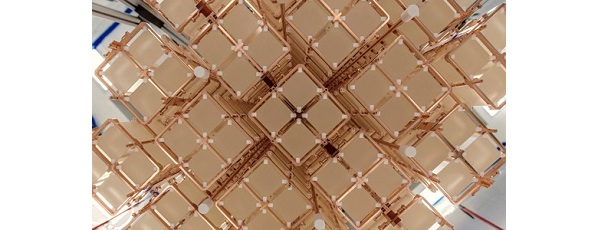The researchers of the CUORE experiment (Cryogenic Underground Observatory for Rare Events), located at the Gran Sasso National Laboratories of the National Institute of Nuclear Physics (INFN), have published the new results of the investigation on the nature of the neutrino in Nature.
The results obtained and published in Nature are based on a amount of data, collected in the last three years, ten times greater than any other research with similar experimental technique. Despite its phenomenal sensitivity, the experiment has not yet observed evidence of double beta decay without neutrino emission. From these results, however, it is possible to establish that a tellurium atom takes more than 22 million billion billion years to decay: these new CUORE limits on the behavior of neutrinos are crucial for the search for a possible new discovery in particle physics which would be revolutionary because it would help to understand our own origins.
But CUORE is a true scientific and technological triumph, not only for its new results, but also for having successfully demonstrated the operation of its cryostat in truly extreme conditions. Cuore cryostat has been operating continuously for almost three years at a temperature of 10 thousandths of a degree. above absolute zero (10 milliKelvin).
The Bologna research group has participated in the CUORE experiment since 2008 and took part in the assembly of the over nine hundred tellurium oxide crystals (130TeO2) and provided a significant contribution during the delicate assembly phase of the cryostat that, as highlighted in the Nature article, is today the state of the art in the context of cryogenic instruments of this size.

The Bologna research group has participated in the CUORE experiment since 2008 and took part in the assembly of the over nine hundred tellurium oxide crystals (130TeO2) and provided a significant contribution during the delicate assembly phase of the cryostat that, as highlighted in the Nature article, is today the state of the art in the context of cryogenic instruments of this size.
But more generally and even more so in searches for rare events, the reduction of background noise is fundamental. In this context, the Bologna group has started a campaign to identify noise sources by focusing on disturbances at frequencies below one hertz. These disturbances constitute an unwanted and uncontrollable background noise that could significantly limit the energy resolution at very low energies as in the case of the search for dark matter or axions. This is an original study that made use of the expertise of colleagues of the Geophysics and of the Oceanography and atmospheric sector of DIFA, in addition to the contributions of colleagues from the INGV of Bologna and the INGV of l’ Aquila, and to the contribution of SARA Electronic Instruments of Perugia.
CUORE will benefit from this ongoing study, but the results obtained will be extremely useful in mitigating the effects of these disturbances in next-generation bolometric experiments which aim to significantly increase the potential for discovery of neutrino-less double beta decay. These include the CUPID experiment which is scheduled to take place again at the Gran Sasso underground laboratories and reuse the cryogenic infrastructure of CUORE, currently in the design phase. With reference to this project, the Bologna group participates, in collaboration with the Bologna unit of the IMM Institute for Microelectronics and Microsystems of the CNR and with the IMEM of Parma, in a research and development of cryogenic thermal transducers.
News on INFN National site


